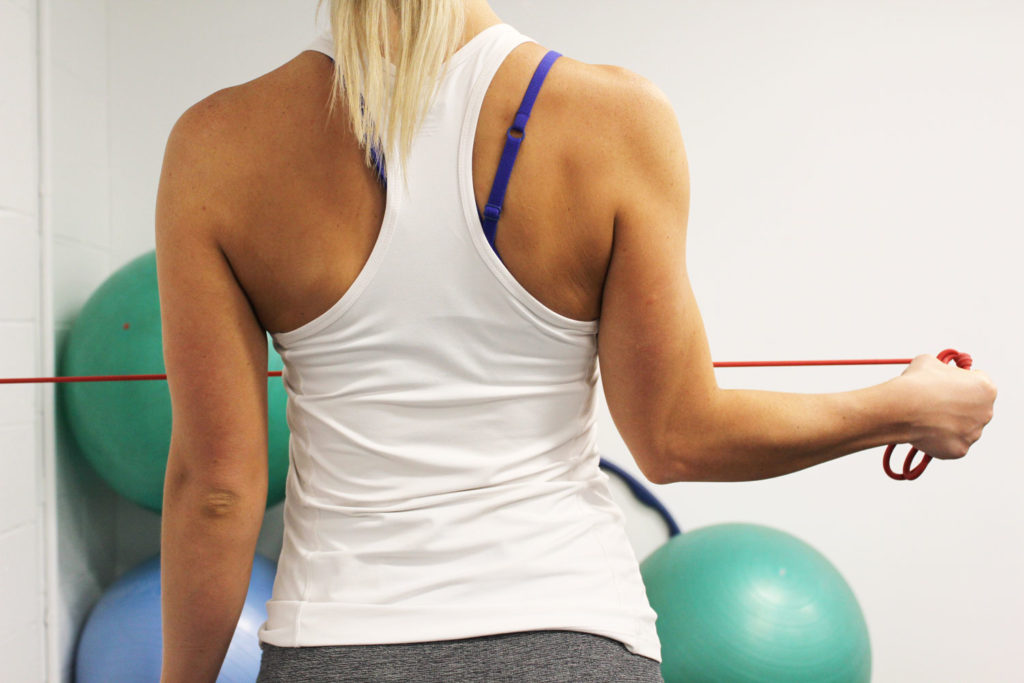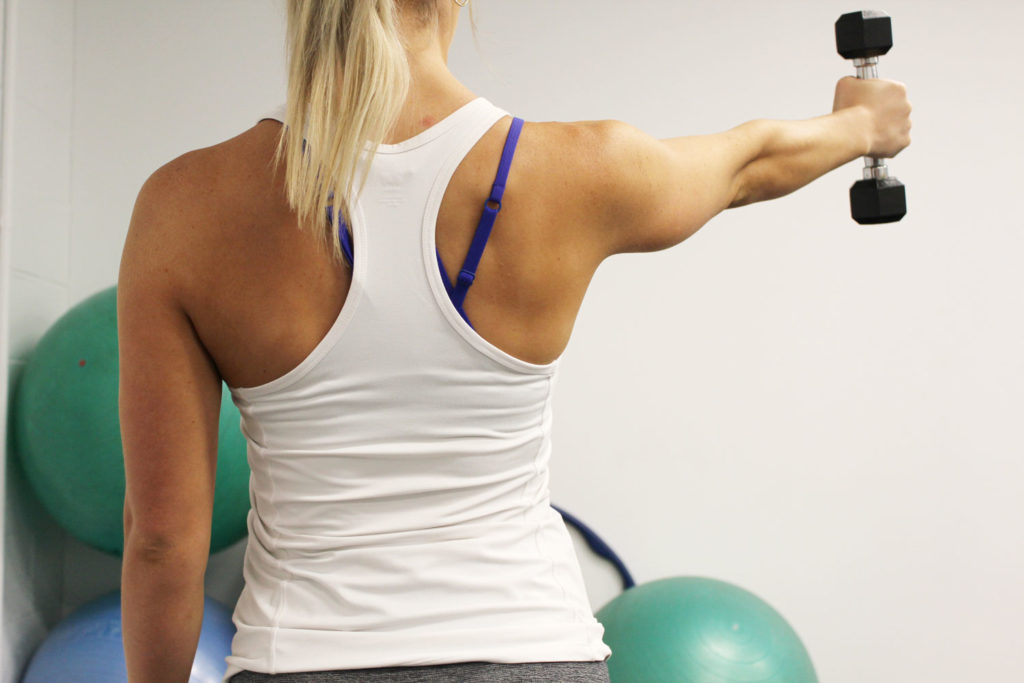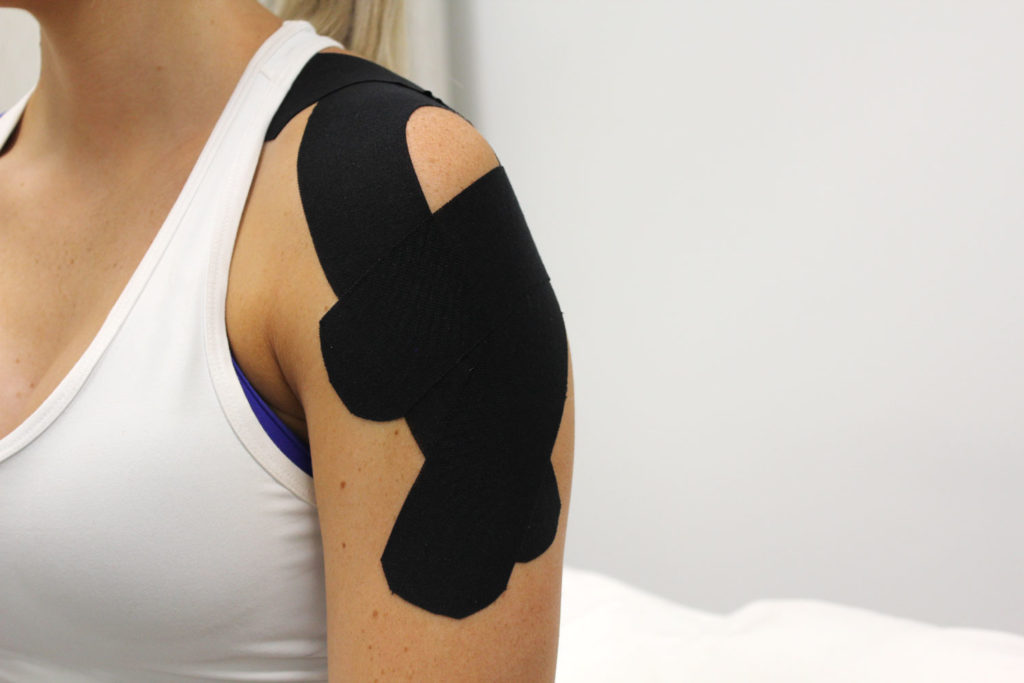Shoulder Pain and Rotator Cuff Injuries
Introduction to shoulder pain & rotator cuff injuries
It can be quite common to have a sore or stiff shoulder at some point in your life, even without an injury. People with a sore shoulder will often visit the GP as a starting off point. This would often result in a referral for an XRAY and diagnostic ultrasound to help aid in assessment. All too commonly a scan of this description will show some form of pathology; most commonly a rotator cuff tear or bursitis. This sounds horrible and can create panic but these findings can be very common across the board.
Shoulder anatomy
The shoulder is a shallow ball and socket type joint, which means it, isn’t held in very well by the bones and ligaments and relies heavily on muscles to support it. The rotator cuff is a group of four muscles that surrounds the shoulder and helps with the stability of the shoulder and movements in all directions. It is labelled a ‘cuff’ because the tendons of all four muscles mesh together and encapsulate the shoulder in a flat blanket-like structure. The rotator cuff is a group of four muscles that are positioned around the shoulder joint. The muscles are named:
- Infraspinatus
- Subscapularis
- Teres minor
The four tendons of the rotator cuff muscles join together to hold the head of the bony surface at the top of the upper arm bone (the humerus) in direct contact with the other shoulder joint surface on the shoulder blade (glenoid fossa of the scapula).
Here is a space underneath the acromion of the scapula (point of your shoulder), called the subacromial space. One of the rotator cuff muscle tendons – supraspinatus – passes through here. The subacromial space is filled by the subacromial bursa and this tendon. This is a fluid-filled sac that helps the rotator cuff to move smoothly. It has a large number of pain sensors.
It is possible to have a tear in one of these muscles and as long as the others are in good condition you may be able to return to normal pain-free function. How can a tear be normal? As we age it is normal for certain parts of our body to become ‘worn’ looking under medical imaging. This is well documented in most body parts with the shoulder being no exception. In a recent study of people aged 50 to 59 years, 13% of the patients had tears, and as age increased the percentage of people that had tears also increased. In the oldest group sample of people older than 80, a significant 51 percent of patients had tears in their rotator cuff shown on ultrasound.
Management of rotator cuff pain
Shoulder pain presentations are a common complaint in a clinical setting and some research suggests of the individuals that have new episodes of shoulder pain and that do not seek treatment:
- 70% will still have pain after 6 weeks.
- 50% will still have pain after 6 months.
- 40% will still have pain after one year.
A rotator cuff is the leading cause of a weak and painful shoulder. These injuries encompass rotator cuff tendinopathy, degeneration, partial-thickness tears, and full-thickness tears. Increased pain and giving way can be experienced when the arm is moved overhead in front and to the side of the body.
Conservative management has been shown to be effective in 73-80% of patients with a full-thickness rotator cuff tear. To eliminate pain experienced by clients, the use of non-steroidal anti-inflammatory medication (NSAIDs) and/or steroid injections into the shoulder joint or shoulder bursa have been effective. Icing the shoulder in the acute phase as well as rest is important to reduce inflammation and pain. Other modalities such as heat, stretching, range of movement exercises, and muscle activation and/or strengthening are also useful in reducing symptoms. Strengthening exercises for the shoulder (rotator cuff muscles) and shoulder blade (scapula stabilisers) as well as giving both postural and technique advice to avoid further or future irritation.
When is surgery an option?
The indications for rotator cuff repair surgery are as follows:
- Symptoms > 6-12 months
- Rotator cuff tear > 3 cm, or those at risk of re-tears
- Significant weakness and loss of function
- Acute tears
The majority of evidence around these pathologies conclude that those with poor outcomes post-surgery typically involves:
- Very large tears
- Significant comorbidities
- Elderly clients
- Non-dominant arm
There are numerous approaches surgeons can use when repairing a rotator cuff tear. These include arthroscopic, mini-open, and open with either a single or double row fixation. Research suggests that there is little difference has been found between the approaches long term (1-2 years). However, the mini-open approach was superior in the short term (3 months). The approach is also important for a physiotherapist to know when a rehabilitation program is being devised following surgery.
Some other common reasons for shoulder pain:
A stiff and painful shoulder
This leads a clinician to the two most common complaints that lead to shoulder stiffness and these are osteoarthritis and frozen shoulder. If there is a high-velocity mechanism, such as fall, then fracture or dislocation will need to be ruled out.
A weak and painful shoulder
Rotator cuff injury is the leading cause of a weak and painful shoulder. These injuries encompass rotator cuff tendinopathy, degeneration, partial-thickness tears, and full-thickness tears. Increased pain and giving way can be experienced when the arm is moved overhead in front and to the side of the body.
An unstable and painful shoulder
Shoulder pain with feelings of an unstable joint will usually mean you have a condition called glenohumeral instability. Symptoms may range from pain at the front and side of the shoulder girdle, vague uncomfortable sensations, apprehension, increased range of motion, and multiple shoulder dislocations.
Take home message
Therapeutic exercise is often the most supported approach for painful shoulder conditions, particularly rotator cuff injuries and shoulder instability. A good clinician should find the impairments of your shoulder pain, and then direct specific interventions towards them. Impairments might include weakness, loss of range of motion, pain, muscle endurance, and coordination of movement.











